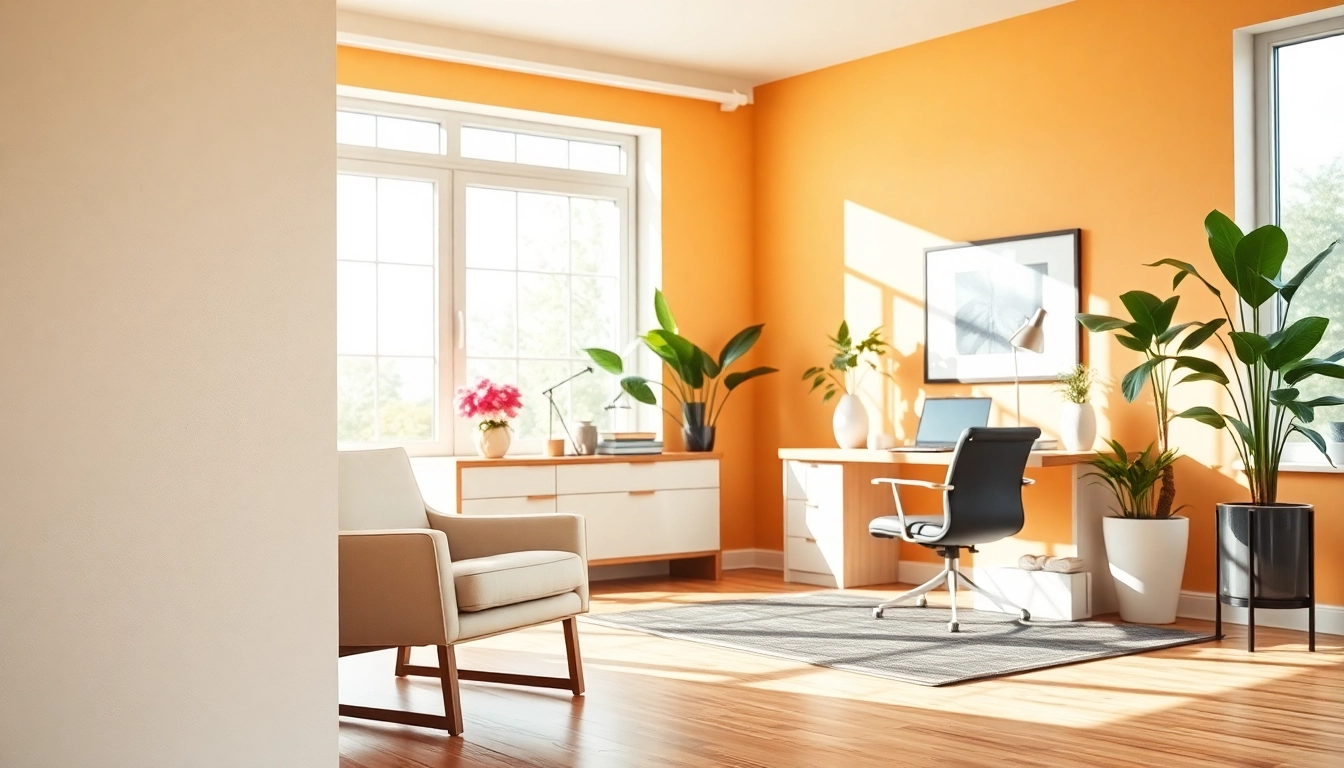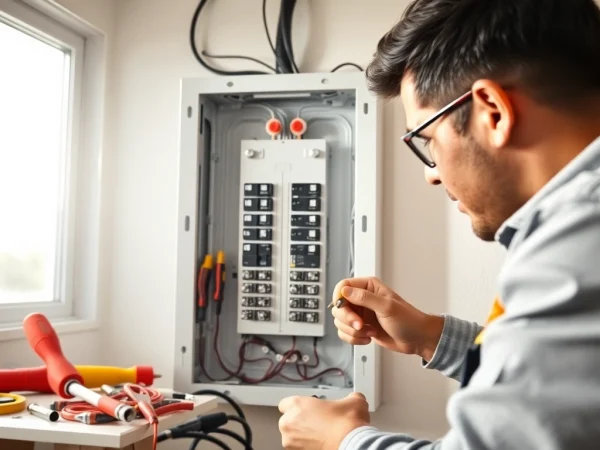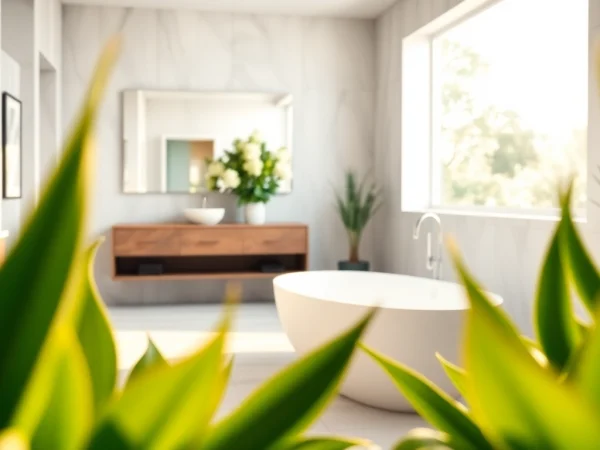Expert Tips for Interior Painting: Your Guide to a Flawless Finish
Understanding Interior Painting Basics
What is Interior Painting?
Interior painting is the process of applying paint or other finishes to the interior surfaces of a building, primarily walls and ceilings, but also including trim, cabinetry, and sometimes even floors. This finishing touch not only enhances the aesthetic appeal of a home but also protects surfaces from wear and tear, moisture, and other potential damages. While the approach may seem straightforward, interior painting requires a solid understanding of various techniques, tools, and even psychological impacts of color choices on inhabitants.
Benefits of Professional Interior Painting
There are numerous advantages to hiring professional painters rather than opting for DIY methods. Firstly, professionals often bring years of experience and expertise in handling complex interior projects. A well-executed interior paint job can significantly elevate the value of a property, leading to a higher return on investment. Additionally, with trained eyes, they can identify imperfections in walls and ceilings that an untrained individual might miss, ensuring a flawless finish. Lastly, professionals usually have access to high-quality materials and tools, delivering superior results than what’s typically available to the average consumer.
Essential Tools for Interior Painting
Before starting an interior painting project, it’s crucial to gather the necessary tools to ensure quality and efficiency. Essential tools include:
- Paintbrushes: Available in various sizes for different applications, a quality paintbrush is crucial for achieving precise edges.
- Rollers: Rollers help cover large areas quickly but require roller trays and covers for optimal use.
- Painter’s Tape: This aids in creating clean lines and protecting areas you do not want to paint.
- Drop Cloths: Protect surfaces from splashes and spills with durable, reusable covers.
- Ladders: Essential for reaching higher surfaces safely.
Choosing the Right Colors for Your Space
Understanding Color Theory in Interior Painting
Color theory plays a pivotal role in interior painting. Understanding how colors interact with each other and how they can affect mood and perception can help you create a harmonious living environment. For instance, warmer colors like reds, yellows, and oranges can make a space feel cozier; whereas cooler colors like blues and greens tend to create a tranquil atmosphere. Color theory also includes concepts such as complementary colors, which are opposite each other on the color wheel and enhance one another when used together.
How to Select Complementary Colors
When selecting colors for your interior, consider using complementary color schemes. For example, if your room is painted in a soft blue, consider accessorizing with warm orange or coral hues. A good rule of thumb is to aim for a 60-30-10 ratio: 60% of your dominant color, 30% of a secondary color for contrast, and 10% of an accent color for visual interest. This not only creates a balanced look but can also mentally and physically enhance the space.
Trends in Interior Painting Colors
Staying updated with current trends can provide insights into what may appeal to buyers or enhance your living environment. As of 2023, natural colors, earth tones, and deep, moody hues have taken the forefront. Colors such as sage green, terracotta, and deep navy are popular choices that bring warmth and tranquility. A trend towards larger swathes of color rather than narrower accents is also observed, allowing spaces to feel more cohesive and inviting.
Preparation Steps Before Painting
Cleaning and Repairing Surfaces
A successful painting project begins long before the first brushstroke. Surface preparation is critical to achieving a long-lasting finish. Start by thoroughly cleaning walls to remove dust, dirt, and grease that could hinder paint adhesion. Next, inspect the walls for cracks or holes. Use spackle or wall filler to repair these imperfections, then sand the areas smooth. Finally, wipe down the repaired areas with a damp cloth to ensure they are ready for painting.
Choosing the Right Paint Type
The type of paint you choose can significantly impact the outcome of your project. Interior paints generally fall into two categories: latex and oil-based paints. Latex paints are popular due to their ease of cleaning and quick drying time, while oil-based paints may provide a more durable coating for high-traffic areas but have a longer drying time and require solvents for cleanup. Additionally, consider the finish of the paint: matte finishes are great for hiding imperfections, while semi-gloss and gloss finishes are easier to clean and more durable but reflect more light.
Efficient Room Setup for Interior Painting
A well-organized workspace can streamline the painting process. Start by moving furniture out of the way and covering it with drop cloths to protect it from overspray and spills. Remove all wall hangings, light switch covers, and outlet plates to avoid paint splatters. Finally, ensure you have a designated staging area for all your tools and materials to keep your workspace efficient.
Best Practices for a Successful Interior Painting Project
Techniques for a Smooth Finish
Achieving a smooth finish involves several techniques. When painting walls, use a roller for broad areas, applying paint in a W or M shape and filling it in without lifting the roller to distribute the paint evenly. For corners and edges, a high-quality paintbrush is invaluable. Always work in sections and maintain a wet edge to prevent lap marks. If you’re dealing with ceilings, it’s advisable to use a paint with a flat finish to minimize reflections and imperfections.
Common Mistakes in Interior Painting
Several mistakes can hinder a paint job, including skipping primer, using poor-quality tools, or failing to adequately prepare surfaces. Rushing through the process often leads to uneven application and visible lines where colors meet. Additionally, incorrect layering can result in colors bleeding into one another, which detracts from the desired finish. Be sure to take your time, and when in doubt, refer to professional tips and guidelines.
When to Hire Professional Painters
If your project seems overwhelming or if you are working with high ceilings or extensive repairs, it may be prudent to hire professional painters. Professionals can save time and ensure a quality finish that meets your expectations. Furthermore, they often provide guarantees on their work, allowing you to enjoy your newly painted space with peace of mind. Don’t hesitate to reach out to local interior painting services for an estimate and advice tailored to your unique project.
Post-Painting: Maintenance and Care
How to Clean Up After Interior Painting
Cleaning up after painting is essential to maintain both your tools and your newly painted surfaces. Start by carefully removing painter’s tape while the paint is still slightly wet to prevent peeling. Clean brushes and rollers promptly with warm, soapy water if you used latex paint, or the appropriate solvents for oil-based paints. Dispose of any paint cans according to local hazardous waste guidelines. Finally, ensure drop cloths are washed or disposed of if heavily soiled.
Maintaining Your Painted Walls
Once the paint job is completed, regular maintenance helps to prolong the life of your walls. Use a soft cloth or duster to keep dust at bay and wipe away any marks with a damp sponge. For deeper cleanings, mild soapy water can remove harder stains without damaging the paint. Avoid harsh chemicals that could cause fading or damage to the finish.
Tips for Future Interior Painting Projects
As you think about future interior painting projects, consider keeping a log of colors, finishes, and techniques used for reference. This information will be invaluable when planning future remodels. Experimenting with different finishes in small areas can also provide insight into what works best for your space. Lastly, continually educate yourself about new trends, tools, and techniques to stay ahead in your home improvement endeavors.










